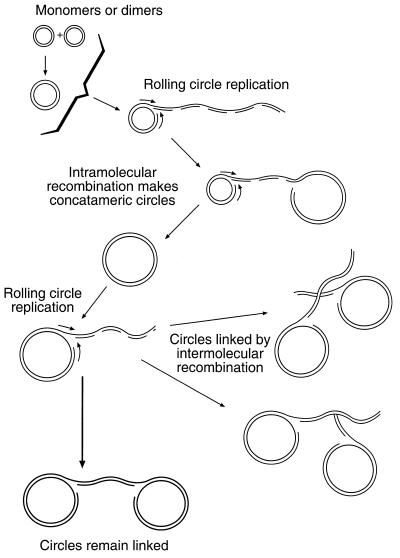Figure 5.
Schematic model, not drawn to scale, for the replication and structure of the transfected plasmids. Where co-transfection occurs, the plasmids may recombine, but replication from either monomers or higher forms (e.g. dimers) takes place by a rolling circle mechanism. The resulting linear tails enter into internal homologous recombination, sometimes generating free circular multimers, constrained in unknown ways to be within the observed 9mer to 15mer size range. In some cases the new circular entity fails to be separated, giving rise to an obvious ‘handcuff’ molecule. This may be the main product. Other variations on the handcuff theme may arise if the new circles start rolling circle replication and their linear tails recombine homologously with other lariats. The linear tails, undergoing discontinuous replication, bear transient single-stranded regions, represented only formally here, which account for the sensitivity of the handcuffs to low doses of ionising radiation, and may explain some aspects of the results of restriction digestion, as discussed in the text.

